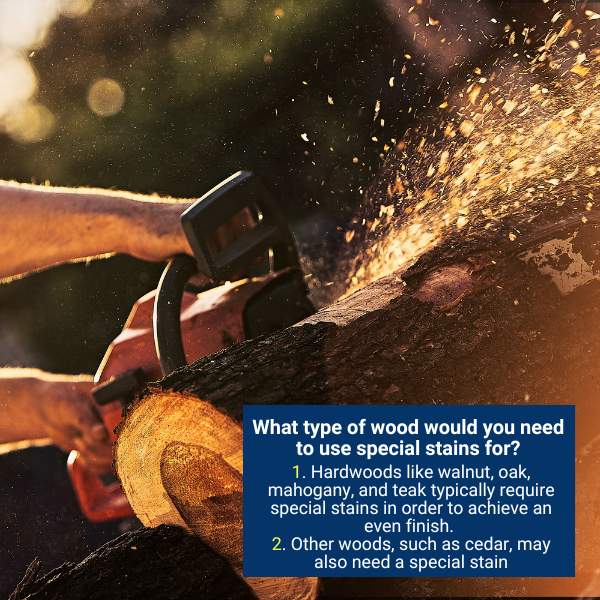Are you looking to give your outdoor space a boost? Decks are the perfect solution, acting as an outside version of your kitchen and allowing you to bring the indoors out during those steamy summer days.
But if you want it to look its best year after year, deck restoration through staining is key! Before taking this route, though, understanding the pros and cons of staining a deck is essential. Here’s what you need to know.
Stained decks keep the natural wood’s texture, hue, and feel and also shield it from humidity, lowering repair costs. However, it won’t fill cracks or cover defects. It takes skilled application and regular maintenance to keep it looking its best.
One needs to think carefully about which wood is appropriate for staining in addition to the benefits and drawbacks of staining decks. So, let’s talk about some other aspects of staining a deck. Read on to discover more.

Weigh The Pros And Cons Of Staining A Deck Before Applying It
If you’re looking to maintain a classic or rustic look to your wooden deck, then using stain is a perfect choice. Not only will it protect and preserve the wood, but it also prevents frequent paint-related headaches that come with other finishing options.
Deck stains not only amplify the natural beauty and elegance of wood, but they also provide a total defense against any inclement weather. By infiltrating the material while being applied, these particular types of stain products create an invisible coating on the outside as well as another layer within that effectively prevents water from sinking in!
As you weigh your options on whether to stain the deck boards of your house, it is critical to consider both the pros and cons associated with this decision.
The Pros Of Staining A Deck
- Preserves the Hue, Pattern, And Texture of the Wood: With more options for tinting thanks to items like Sansin SDF, stains come in solid, translucent, and pure colors, making it simple to decide what percentage of the natural wood comes through. Stained wood will deteriorate as time passes instead of flaking as painted wood does, and in some circumstances, you may also be able to merely gently polish the wood before refinishing it.

- Cuts Into the Wood Grain: Infusing the wood grain with top-notch stains can help protect it from moisture damage and decay. Furthermore, the best way to protect wooden decks is to first stain them and then finish with a transparent sealant that requires much less maintenance.
- Emphasizes the Wood’s Beauty: The natural beauty of a wood surface can be enhanced rather than completely concealed by using the correct stain and finish. Furthermore, staining will ensure that your deck or steps do not crumble or crack like paint would over time. If you want to improve the aesthetics of your outdoor space, then consider a durable solution such as applying a quality stain treatment!
- The Opacity is Simpler to Manage: Unlike paint, the stain does not provide full opacity. You can achieve the level of coverage you desire by applying as many or as few coats until you reach your desired outcome; this makes it easier to control the levels of transparency and adjust them accordingly.
- There are Various Stain Choices: Because the stain is clear, there are transparent wood sealers that highlight the lovely wood you may be choosing for your deck. A translucent stain will still showcase your wood while adding a hint of color if you desire a little more vibrancy. If you want to go “paint-like,” while still employing a stain, there are solid stains that produce a darker hue that resembles paint but functions as a stain.
- Sun Damage Repair: Deck wood is not exempt from sunlight exposure. Unfinished wood can suffer from sun damage, resulting in splits and warping, as well as harm to its distinct texture and hue. Nevertheless, you can avoid this by routinely maintaining your deck wood and staining it with a protective that will block out the Ultraviolet rays’ penetration.

The Cons Of Staining A Deck
- Last Only a Few Years: While certain stains could last longer than five years, waiting too long to restain a wood surface can make the task more difficult and time-consuming. Every couple of years, upkeep is still necessary for decks, even after they have been scraped and restained.
- Some Woods Don’t Hold Stains Very Well: Some types of wood, such as tropical woods, are just too thick to effectively absorb some stains. Sansin DEC or Sansin SDF can be used to stain the majority of tropical hardwoods; however, this kind of wood necessitates a little different sanding approach that should be carried out by an expert.
As long as the transparent coat is treated properly, it might be advantageous to reapply a clear wood protector on other types of wood every several years to protect it from sun exposure. The total surface area will have to be removed and totally rebuilt if the transparent coat is allowed to fail.
- Paint is More Predictable than Wood Stain: Since wood stains are less predictable than paint, staining wood takes a far more skilled application. More testing is necessary to guarantee that the job has the desired impact and that the look and finish are correct.
- It Won’t Seal Fissures: Stain cannot be used to fill up fractures the way paint can. The stain won’t be able to adequately fill inside the cracks because it is thinner.
5.It is Difficult to Cover Defects: If your deck has already worn, you might want to cover up certain imperfections. Unfortunately, the staining is too thin to conceal defects.

Conclusion
When it comes to the look of your deck, you need to get the right shade and type of wood stain. This will help save time and money in applying these stains on your decking material. Additionally, staining can also give a modernized feel when done correctly.
But before you go for this option, consider its potential drawbacks as well. One such disadvantage is that if not done properly or with a low-quality product – it can become very expensive over time due to all the redoing required! So be sure to do your research carefully when selecting which wood stain works best for you!

